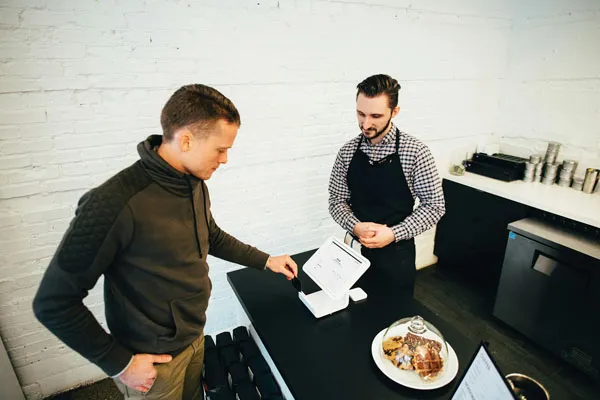NATION – Tipping in the United States, a long-standing custom rooted in the service industry, has undergone a remarkable transformation. Once reserved for restaurant servers, bartenders, and select service professionals, tipping is now expected in an array of contexts. From gas station attendants to coffee shop baristas and even warehouse packers for online orders, the scope of tipping has expanded dramatically. This shift has ignited debates about fairness, economic implications, and the sustainability of a system that increasingly places the burden of compensation on consumers.
The rise in tipping expectations is evident in the percentages suggested by payment systems and service providers. While tipping 15% at restaurants was once considered the norm, consumers are now often prompted to leave gratuities of 20%, 25%, or even 30%. In some cases, these expectations extend to self-service kiosks and minimal-service interactions, fueling widespread frustration among customers who feel pressured to tip in situations they never encountered before.
Tipping became ingrained in the U.S. during the late 19th century, particularly in the hospitality industry, where workers earned low wages and relied on gratuities to supplement their income. Over time, tipping norms solidified, and by the 20th century, leaving 10-15% for restaurant service was standard practice. This system, while controversial, became a fixture of American culture.
In contrast to the United States, tipping norms in Europe are generally more restrained and structured. In many countries, such as France and Italy, service charges are often included in the bill, making additional tipping optional and typically modest—rounding up the bill or leaving small change is common. In countries like the United Kingdom, Spain, and Greece, tipping around 10-15% is customary but not obligatory. This system reflects a fundamental difference: European service workers are usually paid higher base wages, reducing their reliance on gratuities and placing less pressure on customers to supplement incomes through tipping.
In recent years, however, the boundaries of tipping have expanded. Digital payment systems, often equipped with pre-set tipping suggestions, have contributed to this trend. Whether buying a cup of coffee, picking up a takeout order, or receiving a package, consumers are increasingly asked to leave tips. These prompts often suggest amounts well above historical norms, subtly encouraging customers to tip generously, even in situations where they may not have tipped at all a decade ago.
This evolution is not without precedent. During the COVID-19 pandemic, tipping surged as a gesture of appreciation for frontline workers risking their health to serve the public. Restaurants and service industries also implemented higher gratuities or added service charges to recover from pandemic-induced losses. As businesses reopened, tipping habits became more entrenched, with many consumers continuing to tip more frequently and generously than before.
The expansion of tipping culture has not been universally embraced. Surveys indicate that many Americans are uneasy with the growing prevalence of tipping requests. According to Pew Research Center, 72% of U.S. adults believe tipping is expected in more places today than five years ago, but only 34% feel confident about when and how much to tip. This uncertainty has led to what some call ”tipping fatigue,” with consumers expressing frustration at being asked to tip for services they perceive as part of a provider’s regular duties.
Younger generations, particularly Gen Z, are leading the backlash. Many view tipping as a tool used by employers to shift the financial burden of fair wages onto customers. Social media is rife with stories of tipping requests that some find absurd, such as prompts at self-checkout machines or for minimal interactions, like handing over a coffee cup. Critics argue that these practices undermine the original intent of tipping: to reward exceptional service.
Others contend that tipping has become a source of social pressure. Digital payment systems, which display tipping options prominently, often make it awkward for customers to decline. This phenomenon, dubbed ”guilt tipping,” leaves many feeling compelled to tip even when they believe it is unnecessary.
At the heart of the tipping debate is the issue of worker compensation. In many states, tipped workers can be paid below the standard minimum wage, with the expectation that tips will make up the difference. For these workers, tips are not merely a bonus but a crucial part of their income. According to industry data, service employees in restaurants and bars earn nearly 60% of their wages from tips.
Proponents of tipping argue that the system benefits both workers and customers. For workers, gratuities provide an incentive to deliver excellent service. For customers, tipping allows them to reward good performance and maintain a sense of control over their experience.
Critics, however, see tipping as an outdated practice that exacerbates income inequality. They argue that tipping enables businesses to keep wages low while shifting the responsibility for fair pay onto consumers. Some suggest that eliminating tipping in favor of higher base wages would provide greater income stability for workers.
Businesses experimenting with alternative models have seen mixed results. Restaurateur Danny Meyer, for example, attempted to eliminate tipping at his New York establishments, opting instead to raise menu prices and pay employees higher wages. While the initiative initially received praise, it was eventually rolled back during the pandemic as workers expressed concerns about losing income and customers resisted higher prices.
For consumers, the rising prevalence of tipping presents practical and ethical dilemmas. As inflation drives up the cost of goods and services, tipping adds another layer of financial strain. A simple transaction—such as purchasing a coffee or ordering takeout—can become a fraught decision, with customers weighing their budget against social expectations.
Some consumers have begun pushing back, arguing that tipping should be reserved for service-oriented interactions rather than routine transactions. Social media platforms have amplified these sentiments, with influencers ridiculing tipping requests for non-service roles. Others advocate for transparency in pricing, suggesting that businesses include service charges or higher base prices to eliminate the ambiguity surrounding tipping.
Not all consumers are opposed to tipping, however. Many still view it as an essential way to support workers, particularly in industries where wages are notoriously low. For these individuals, tipping is a social contract—a way to ensure that workers are fairly compensated, even if the system itself is imperfect.
As tipping norms continue to evolve, some businesses are experimenting with alternatives. A small but growing number of coffee shops and restaurants have adopted no-tipping policies, raising prices to cover higher wages for employees. In Brooklyn, for example, several coffee shops now include tax and gratuity in their menu prices. While this simplifies the customer experience, it also results in higher sticker prices, which can alienate budget-conscious patrons.
Other establishments have implemented mandatory service charges, distributing the proceeds among staff. This approach aims to provide consistent compensation while removing the discretionary nature of tipping. However, mandatory charges have their own challenges, as some customers view them as an unwelcome imposition.
Proposals to eliminate the tipped minimum wage, which remains as low as $2.31 per hour in some states, have gained traction. Advocates argue that raising the federal minimum wage for all workers would reduce dependence on tips and create a more equitable system. Opponents, however, worry that higher wages could lead to increased prices or reduced employment opportunities in the service sector.
The future of tipping in the United States remains uncertain. While the practice is deeply ingrained in American culture, its expansion into new contexts has sparked significant pushback. As these debates unfold, they reflect broader questions about labor, equity, and the values that underpin the nation’s service economy.
—Stephen Lightman











